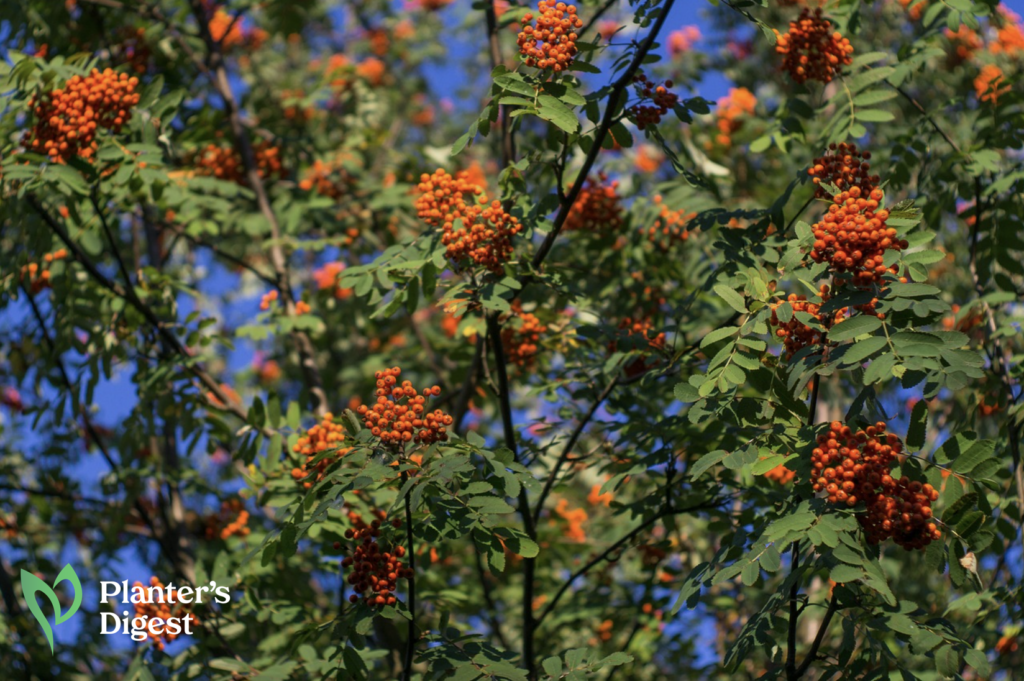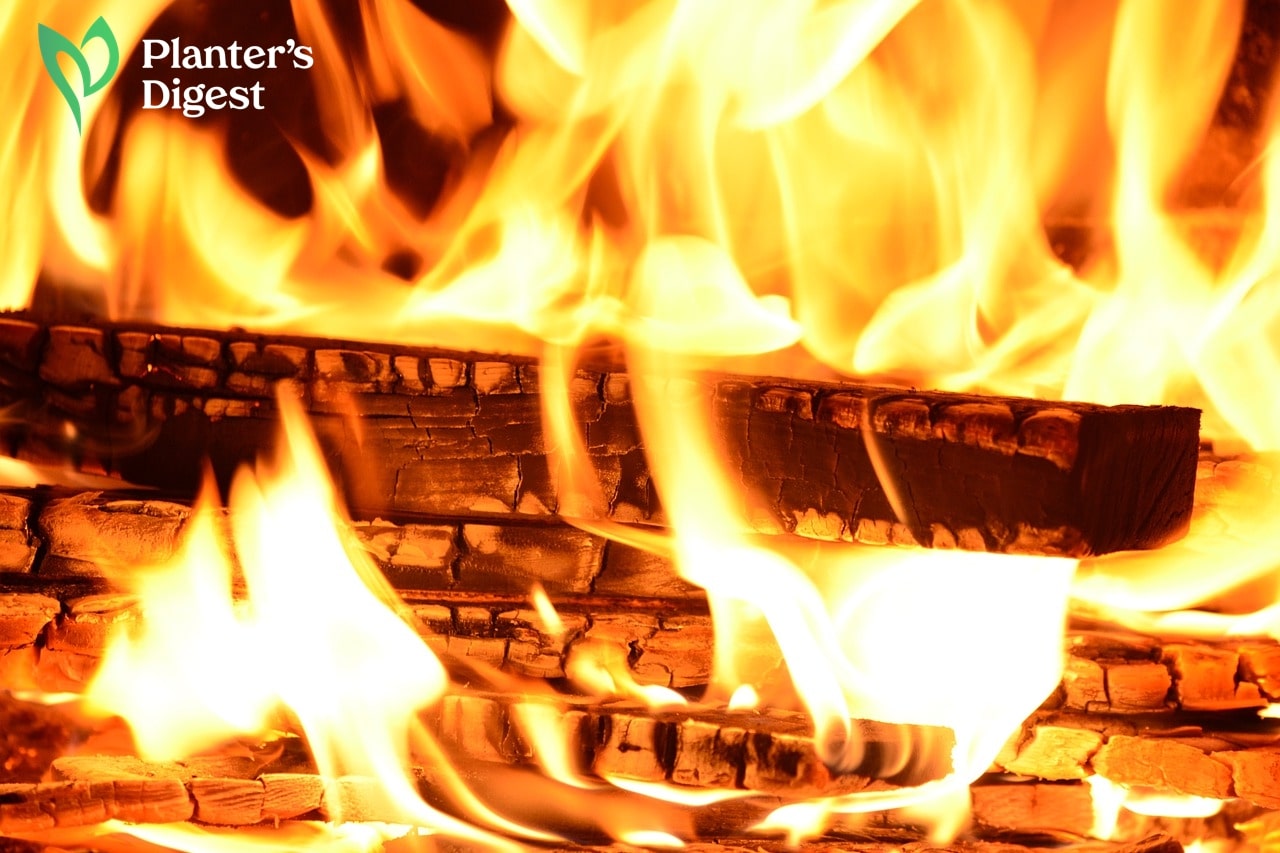
The great mountain ash is one of the tallest flowering trees in the world, and its berries are widely-used to treat kidney disease, diabetes, arthritis, vitamin C deficiency, diarrhea, and even menstrual problems.
But did you know that you can also use mountain ash as firewood?
In this article, we’ll walk you through the pros and cons of using mountain ash firewood and how to burn it for every wood-burning activity properly. Let’s get started.
Is mountain ash a good firewood?
Mountain ash makes an excellent firewood. It produces a high heat output of 21.2 million BTUs per cord with moderate coals for a slow and steady fire throughout the night.
This firewood is safe to burn in fireplaces because of its low smoke and creosote output. It also has low sap content, so it will not produce sparks and cause an unwanted fire inside your home.
Below are the physical and fire characteristics of mountain ash firewood:
| Tree Name | Mountain Ash |
| Scientific Name | Sorbus aucuparia |
| Common Name | RowanVictorian Ash |
| Family | Rosaceae |
| Height | 230 to 330 feet |
| Life Span | 400 years |
| Type of Wood | Hardwood |
| Dry Weight | 46 lbs/ft³ ( kg/m³) |
| Seasoning Time | 6 to 12 months |
| Heat Content (million BTUs per cord) | 21.2 |
| Sap Content | Low |
| Splitting Difficulty | Easy |
| Smoke | Low |
| Smell | Neutral |
| Coal Production | Moderate |
| Creosote Build-up | Low |
Fire Characteristics of Mountain Ash Wood
Mountain ash is an easy-to-split firewood with low sap content but produces high heat, moderate coals, and low smoke and creosote when burned.
Read on to understand how each fire property affects mountain ash firewood.
1. Easy to Split
Mountain ash wood is easy to split using a maul, but it has a lot of twiggy branches that you’ll have to work through.
2. Low Sap Content
For a flowering tree, mountain ash produces a low amount of sap. This, in turn, helps the firewood produce less smoke and creosote when burned.
Fair warning: when you see a mountain ash tree leaking with sap, steer clear and do not burn any wood from that tree because it’s a sign of a tree infection.
3. High Heat Output
Mountain ash produces a very good amount of heat at 21.2 million BTUs per cord, enough to keep you warm during chilly autumn nights.
It has a close heat output with tamarack (22.5 million BTUs), but mountain ash can make its fire last longer because of its better coal production and high density.
4. Low Creosote Build-Up
There is also low creosote build-up when you burn mountain ash firewood, thanks to its low sap content. So, it’s a safe wood to burn because there will be little creosote deposit in your fireplace after burning mountain ash firewood.
Creosote build-up in your chimney or flues can be a fire hazard since this black tar-like substance is flammable, and you wouldn’t want these causing unwanted fire in your house.
5. Low Amount of Smoke
Mountain ash produces little smoke because of its low sap and moisture content. This means that it will use more energy to make a hot fire instead of vaporizing the moisture content in the firewood.
6. Moderate Coal Production
Mountain ash can make long-burning fires, thanks in part to the moderate amount of good-quality coal it produces.
These coals add more fuel to the fire and keep it hot enough to be rekindled after the firewood finishes burning.
Benefits and Drawbacks of Using Mountain Ash as Firewood
| Benefits | Drawbacks |
| Efficient heat output | Twiggy branches |
| Moderate coal production | |
| Low sap content |
Mountain ash efficiently burns firewood that can give you a slow yet steady fire at 21.2 million BTUs per cord.
As a dense wood, it tends to burn longer than most softwoods. The good quality of its coals even extends its heat.
Mountain ash is a naturally-dry wood with low sap and moisture content. This makes it season faster within 6 to 12 months and produces low smoke, creosote and sparks when burned.
The only drawback of burning mountain ash is its twiggy branches. It’s challenging and time-consuming during the harvesting and splitting period, but it seems like a small price compared to all the benefits this might firewood can give you.
How does mountain ash compare with other firewood?
Mountain ash has almost the same fire-burning characteristics as hackberry firewood, but mountain ash is relatively easier to split than the latter.
Compared with high heat-producing hardwoods like oak and hickory, mountain ash has lower BTU, but it’s still a decent efficient fuel source for anyone who wants a slow and steady heat for the night.
How long should you season mountain ash wood?
Mountain ash wood takes between 6 to 12 months to season and dry out completely. This time is relatively fast because of its low sap and moisture content.
Well-seasoned wood always burns better and produces less smoke than green wood.
In as early as eight months, you can already burn mountain ash firewood. But it’s always best to check if it has reached a moisture content of 20% or below using a moisture meter.
FAQs on Mountain Ash Firewood
Mountain ash trees are not the same as ash trees – in fact, they aren’t true ash trees. They are actually a member of the rose family.
Mountain ash has three varieties in specific regions in America – sitka mountain ash in western America, showy mountain ash in eastern America, and American mountain ash in northeastern America.
You can use mountain ash for cooking in campfires because of its high heat and low smoke and spark output.
Mountain ash is not an ambient firewood because it emits no scent. On the brighter side, it is a safe wood to burn indoors because of its low smoke, creosote and sparks output.




